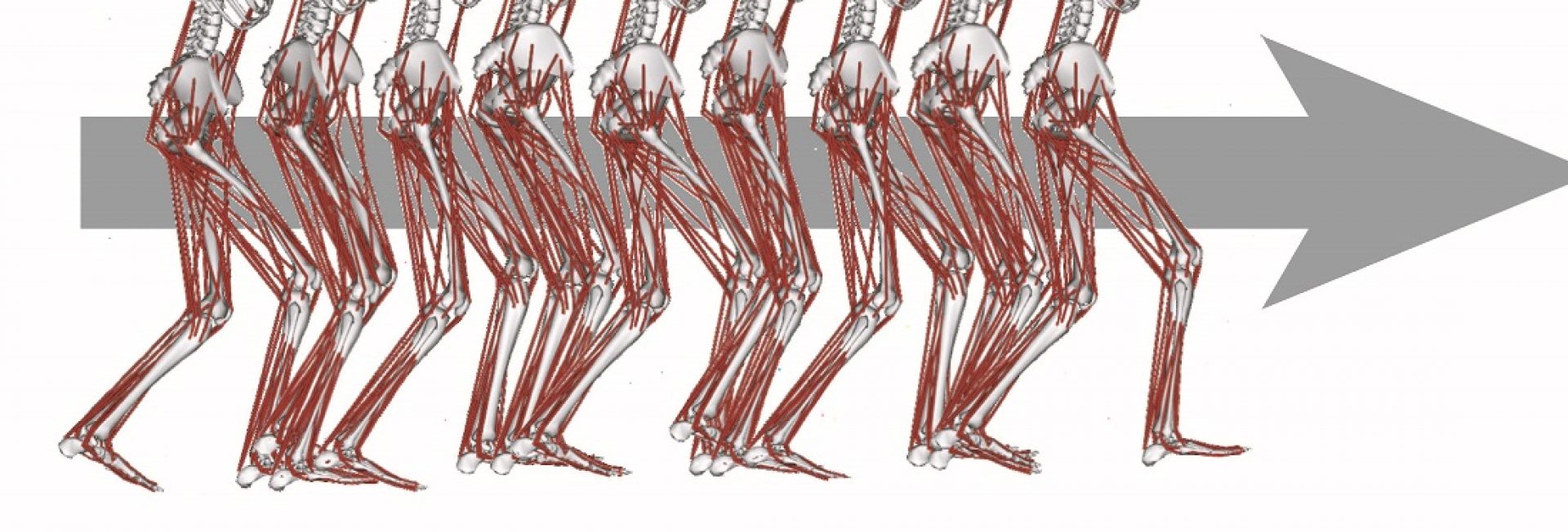When Biomechanics Meets Reality: The OpenSim Simulation Gap

Disclaimer: this is an AI-generated article intended to highlight interesting concepts / methods / tools used within the SmartDATA Lab's research. This is for educating lab members as well as general readers interested in the lab. The article may contain errors.
Why your digital twin might be lying to you—and what that means for the future of human movement modeling.
In the realm of biomechanics, OpenSim stands as a cornerstone—a powerful, open-source simulation engine that enables researchers to model and analyze musculoskeletal dynamics. From studying gait patterns to designing prosthetics, OpenSim has been instrumental in advancing our understanding of human movement.PubMed Central+1ScienceDirect+1
Yet, as with any model, there exists a gap between simulation and reality. Recent studies have highlighted discrepancies between OpenSim’s predictions and actual sensor data, raising questions about the fidelity of these simulations. This divergence, often referred to as the “sim-to-real gap,” underscores the challenges inherent in accurately modeling complex biological systems.arXiv
The Promise and Limitations of OpenSim
OpenSim operates by constructing detailed musculoskeletal models, incorporating bones, joints, and muscles to simulate movement. These models are grounded in physics-based principles, allowing for analyses such as inverse dynamics and forward simulations.Wikipedia
However, the accuracy of these simulations is contingent upon the quality of input data and the assumptions embedded within the models. For instance, muscle parameters like maximum isometric force are often estimated rather than directly measured, introducing potential sources of error. Moreover, variations in individual anatomy and movement patterns can further complicate the modeling process.SimTKResearchGate
Bridging the Gap: Integrating Sensor Data
To enhance the realism of simulations, researchers have explored the integration of sensor data, such as electromyography (EMG) and inertial measurement units (IMUs). These sensors provide real-time insights into muscle activations and joint kinematics, offering a means to validate and refine OpenSim models.
One notable approach involves using artificial neural networks (ANNs) to estimate muscle parameters from sensor data. In a study co-authored by Joel B. Harley, researchers employed ANNs to classify Hill-type muscle parameters based on simulated lateral pinch data, demonstrating the potential of machine learning in enhancing model accuracy. PLOS+1ResearchGate+1
Additionally, techniques like inverse distance weighting (IDW) have been utilized to interpolate muscle activations from sparse datasets, providing a computationally efficient means to generate large-scale simulations. ScienceDirect+1PubMed+1
The Role of Linear Algebra in Biomechanical Modeling
At the heart of biomechanical simulations lies linear algebra—a mathematical framework that facilitates the representation and manipulation of complex systems. Matrices and vectors are employed to model the relationships between forces, motions, and anatomical structures.
For example, the equations governing inverse kinematics—a process used to determine joint angles from motion capture data—are formulated using matrix operations. Solving these equations enables the alignment of simulated models with observed movements, a critical step in ensuring the validity of simulations.
However, the accuracy of these solutions is influenced by factors such as sensor noise and model assumptions, highlighting the importance of robust mathematical techniques in mitigating errors.
Challenges and Future Directions
Despite advancements, several challenges persist in aligning OpenSim simulations with real-world data. Discrepancies in sensor measurements, individual variability in anatomy and movement, and simplifications within models can all contribute to the sim-to-real gap.
To address these issues, ongoing research focuses on enhancing model personalization, improving sensor integration, and developing more sophisticated algorithms for parameter estimation. Collaborative efforts between engineers, clinicians, and data scientists are essential in advancing the fidelity of biomechanical simulations.
Conclusion
OpenSim remains a vital tool in biomechanics, offering unparalleled capabilities in modeling and analyzing human movement. However, acknowledging and addressing the limitations of simulations is crucial in ensuring their applicability to real-world scenarios. By integrating sensor data, leveraging advanced mathematical techniques, and fostering interdisciplinary collaboration, the field can move closer to achieving simulations that truly mirror the complexities of the human body.ResearchGate+2Wikipedia+2arXiv+2
Relevant Lab Papers
- Kearney, K. M., Harley, J. B., & Nichols, J. A. (2021). Classifying muscle parameters with artificial neural networks and simulated lateral pinch data. PLOS ONE. Link
- Kearney, K. M., Harley, J. B., & Nichols, J. A. (2023). Inverse distance weighting to rapidly generate large simulation datasets. Journal of Biomechanics. Link
Other Relevant Literature
- Reinbolt, J. A., et al. (2011). Simulation of human movement: applications using OpenSim. Procedia IUTAM. Link
- Derungs, A., & Amft, O. (2020). Estimating wearable motion sensor performance from personal biomechanical models and sensor data synthesis. Scientific Reports. Link
- Chang, J., et al. (2018). Using 3D Scan to Determine Human Body Segment Mass in OpenSim Model. arXiv preprint. Link
- Mahajan, I., et al. (2024). Quantifying the Sim2real Gap for GPS and IMU Sensors. arXiv preprint. Link
- Chandrasekaran, M., Francik, J., & Makris, D. (2023). Gait Data Augmentation using Physics-Based Biomechanical Simulation. arXiv preprint. Link
Biomechanics Deep Learning Digital Twin OpenSim Scientific Machine Learning


2 Responses
How can the integration of sensor data such as electromyography (EMG) and inertial measurement units (IMUs) help reduce the gap between OpenSim simulations and real data?
These can be used used to fit the movements of a person to the OpenSim simulators (since these are both variables in OpenSim). One of the challenges is that everything else in the simulation model could fail to fit the real data as well.
Here is a relevant publication from our group:
K. M. Kearney, T. O. Diaz, J. B. Harley, and J. A. Nichols, “From simulation to reality: Predicting torque with fatigue onset via transfer learning,” IEEE Trans. Neural Syst. Rehabil. Eng., vol. 32, pp. 3669–3676, Oct. 2024.